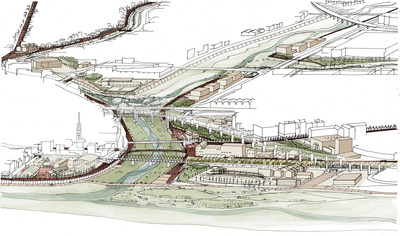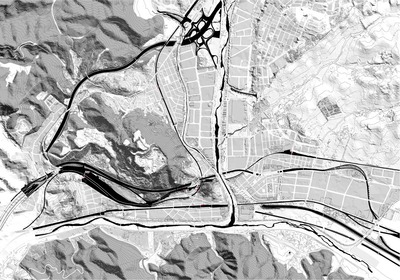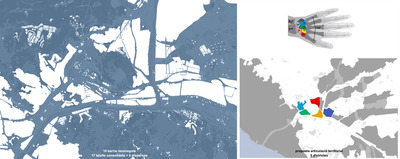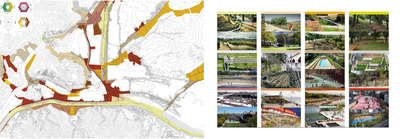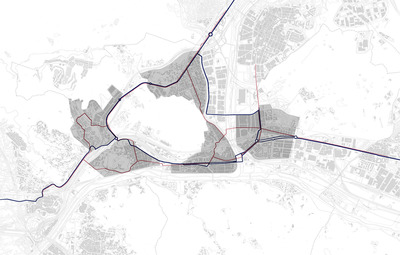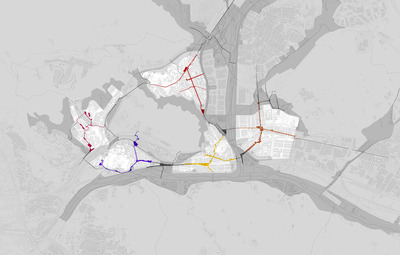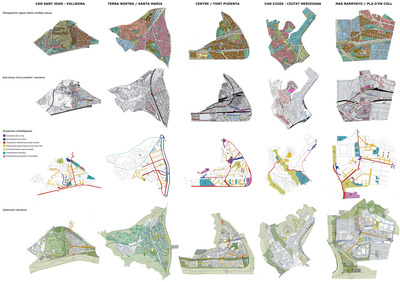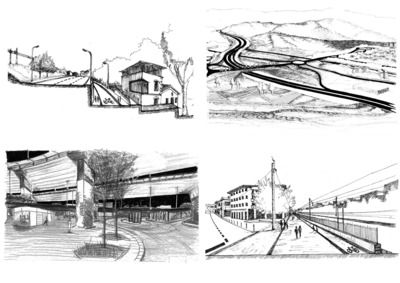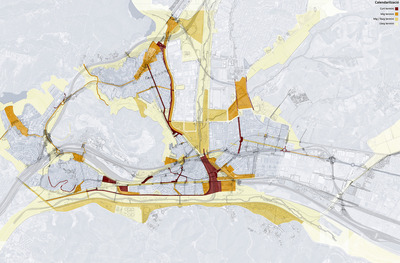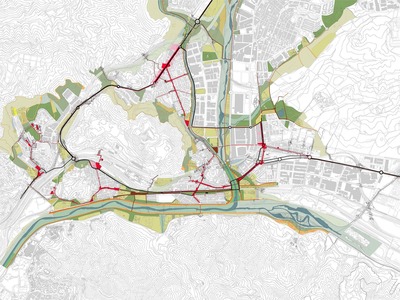Proposal for a new urban planning model for Montcada i Reixac

This study proposes a new urban planning model for the municipality of Montcada i Reixac, which is backed by technical, political and social consensus in order to ensure its implementation in the short, medium and long term. Montcada i Reixac must become a local and territorial hub, defined by a specific commitment to the relationship between the town and nature, capable of achieving optimum urban, social and ecological cohesion.
- Area:
- 1.550 ha
- Phases:
- Estudi -
- Supervision and coordination:
-
Josep Maria Carreras (Director of Urban Planning Services, AMB), Loles Herrero (Head of the Urban Planning Service, AMB)
- Drafting team:
-
Jordi Peralta and Isabel Tomé (architects, AMB), Helena Valls, Santi Pérez, Gavina Corbetta, Clara Pérez, Elisa Marchante (architecture students, AMB)
- Municipalities:
- Montcada i Reixac
Gallery
Description
The strategic geographical position of the municipality of Montcada i Reixac is subject to the accumulation of different territorial systems in a very small area. This overlapping creates a series of tensions that make understanding and treatment of them difficult. The challenge is to resolve this situation with a clear and powerful structure that brings cohesion to the municipality and opens up new perspectives for the future.
In order to make this local and territorial organisation possible, the model proposed uses the fragmented nature of this urban system, while correcting its layout. A new hypothesis for grouping fabrics into five urban districts is proposed as a strategy for spatial planning. This urban reorganisation will enhance the individual identity of each district, in order to generate synergies and cross-relationships. It will become a balanced and interconnected archipelago municipality that will lead to a qualitative leap in its overall perception. It is a model in which all citizens will be able to enjoy the advantages of the compact city and a direct relationship (<300 m) with nature and the countryside.
The study defines a new urban structure that reconnects the municipality and reinforces the richness of its layout and its dynamic and connected nature. Three components are defined:
1) Membrane. This component acts as a metropolitan passageway (it contains the major river and rural corridors), as a transition area between the urban system and the system of open spaces, and as an envelope for the five districts, linking them together. It is a hub which by bringing all the districts together, must become not only a functional space for transit, but also a space for meetings and activities (leisure, entertainment, services and facilities). It is therefore essential to counteract the longitudinal uniformity of the strip, based on possible local anchors linked to the urban or natural features of each location.
2) Chain. This municipal component connects the five districts with neighbouring municipalities. A chain linking historic streets, commercial corridors, boulevards, walkways, new high-frequency bus networks, routes linking railway stations, markets, sports centres, etc. In addition to clarifying functional relationships, it will also generate new areas of centrality in these networks that are linear rather than sporadic. Strategic actions aimed at achieving this slow connection are being studied. New high-frequency bus networks, linking train stations, markets and sports centres.
3) Centres. Local urban cohesion must be based on defining and reinforcing the centres of each of the five districts, which are capable of reconnecting the different fabrics of which they are composed. After the main internal discontinuities have been overcome, the civic structure connects various features including old town streets, shopping districts, boulevards, walkways and heritage routes. A number of areas are identified for transformation of the existing planning, by intensifying or rethinking uses to further reinforce these centres. The overall objective is to have an impact on the significance and identity of each neighbourhood, and to promote complementary roles between them, fostering interaction in a rich and cohesive system.













































